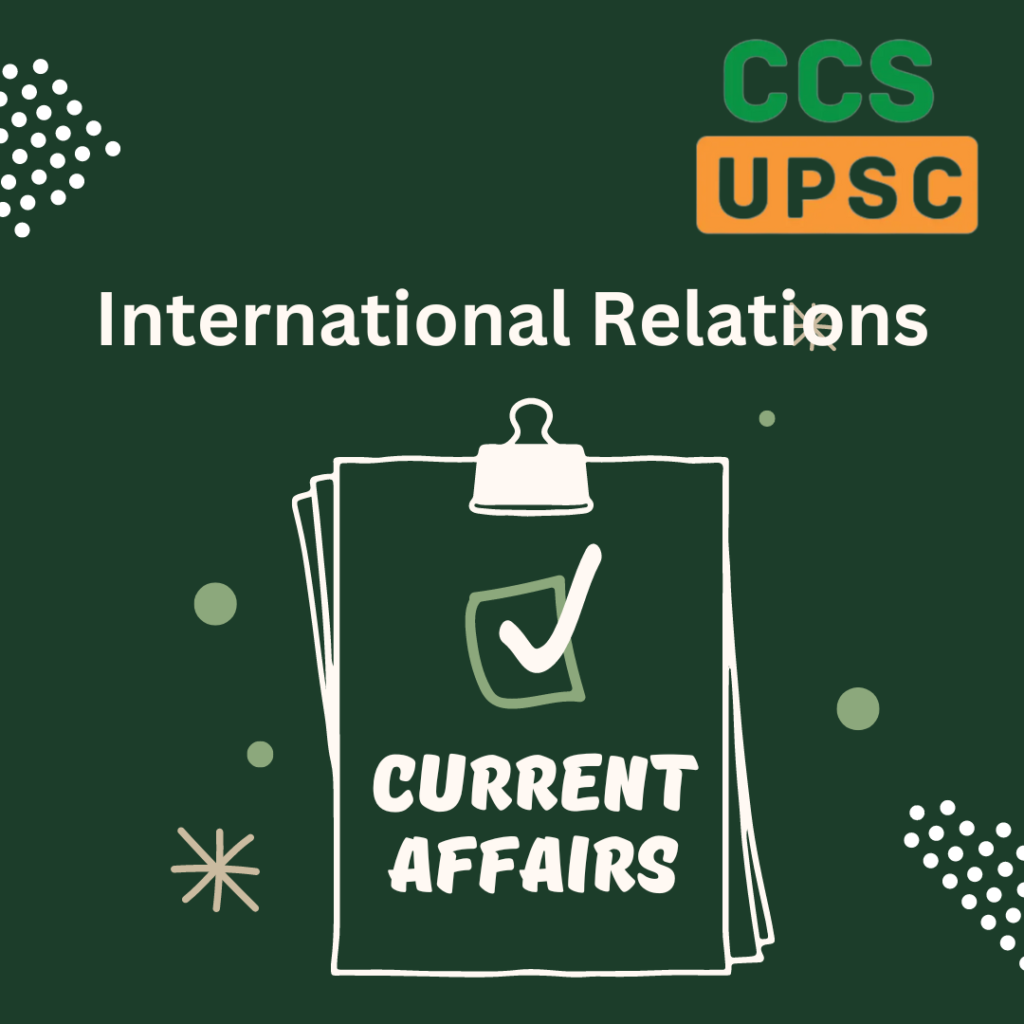Context:
∙ India and Saudi Arabia have decided to set up a Joint Committee on Defence Cooperation to give a boost to the defence ties.
India-Saudi Arabia Relations:
∙ Establishment of diplomatic relations in 1947, and it was strengthened by the signing of Delhi Declaration in 2006 and elevated to a strategic partnership by signing of Riyadh Declaration in 2010.
∙ The Prime Minister of India’s visit to Riyadh in 2016 captured the spirit of enhanced cooperation in the political, economic, security, and defence realms.
∙ King Salman conferred the King Abdulaziz Sash (the Kingdom’s highest civilian honour) to India’s Prime Minister, indicating the importance of Saudi Arabia-India relations.
Current Scenario:
∙ India’s relations with Saudi Arabia have witnessed unprecedented growth in recent years, marked by a remarkable rise in trade and other investments.
∙ Trade: India’s foreign trade with Saudi Arabia reached an all-time high of $52.75 billion in FY23.
∙ India received $3.22 billion in FDI from Saudi Arabia between April 2000 and June 2023.
∙ India sources crude petroleum, petroleum products, fertilisers, raw plastic, organic and inorganic chemicals from Saudi Arabia.
∙ Energy Security: Saudi Arabia contributes to India’s energy security as India is highly dependent on imports for its energy needs, importing 87% of oil consumed, and the Middle East accounts for over 60% of India’s crude oil imports.
∙ Food Security: India complements Saudi countries in their food security as Saudi Arabia is largely import-dependent for its food needs and manufactured goods, including textiles.
∙ Strategic Partnership Council (SPC): India is the fourth country after the UK, France, and China to partner with Saudi Arabia to establish the India-Saudi Arabia Strategic Partnership Council (SPC) in 2019.
∙ This aims to take forward mutual collaborations on the economy, investments, as well as social, political, and security matters.
∙ Defence Cooperation: India and Saudi Arabia have a Joint Committee on Defence Cooperation (JCDC) that meets regularly.
∙ Indian Navy cooperates with Royal Saudi Naval Force through various initiatives, which include operational interactions such as bilateral naval exercise Al Mohed Al Hindi, training and other maritime avenues.
∙ Indian Navy ships have been regularly undertaking port calls at various ports of Saudi Arabia.
∙ Various Exercise: The Indian Navy has also been interacting with the Royal Saudi Naval Force in various multilateral fora – Ex Milan, Indian Ocean Naval Symposium, Combined Maritime Forces and Djibouti Code of Conduct – Jeddah Amendment (DCoC-JA).
∙ Regional Stability: Both countries agreed to work together for peace, security and stability of the region, as Iranian-backed Houthi militants in Yemen stepped up attacks on vessels and disrupted maritime traffic in the Red Sea.
∙ Indian Ocean Naval Symposium (IONS): The navies of the two countries could explore practical cooperation in the fight against piracy and an active role of the Royal Saudi Navy in the IONS.
Challenges
∙ Energy Dependence: The core element of their relationship continues to revolve around energy, particularly Saudi Arabia’s export of crude oil.
∙ India is highly dependent on imports for its energy needs, importing 87% of oil consumed, and the Middle East accounts for over 60% of India’s crude oil imports.
∙ Saudi Arabia’s Aid to Pakistan: While engaging with India, Saudi Arabia’s aid to Pakistan raises concerns.
∙ Economic Shifts, Political Transitions, and Geopolitical Dynamics: These factors have tested their relationship. However, the underlying respect, shared interests, and commitment to mutual growth have allowed their ties to remain resilient.
∙ Role of China: The country is also engaged with China, moving towards rapprochement with Iran and Israel, and is also now consolidating the Saudi partnership with the US, India, and Europe.
∙ Many have thus already described this engagement as a power shift, with China emerging as a significant player in the Middle East.
∙ Increasing Chinese influence in the Middle East may indirectly help Pakistan, both economically and strategically.
Conclusion and Way Forward
∙ Despite the challenges, both nations have recognized the importance of adapting their partnership to address modern challenges. They have established the India-Saudi Arabia Strategic Partnership Council (SPC) in 2019 to take forward mutual collaborations on the economy, investments, as well as social, political, and security matters.
∙ India needs to patiently assess if China’s growing involvement in the Gulf is detrimental to its long-term security interests and the regional balance of power.
∙ The I2U2 partnership between India, Israel, the UAE, and the US has already put India on the region’s alliance canvas.
∙ At the same time, recent developments also provide a window of opportunity for India to embed itself as a significant player in the Middle East.


